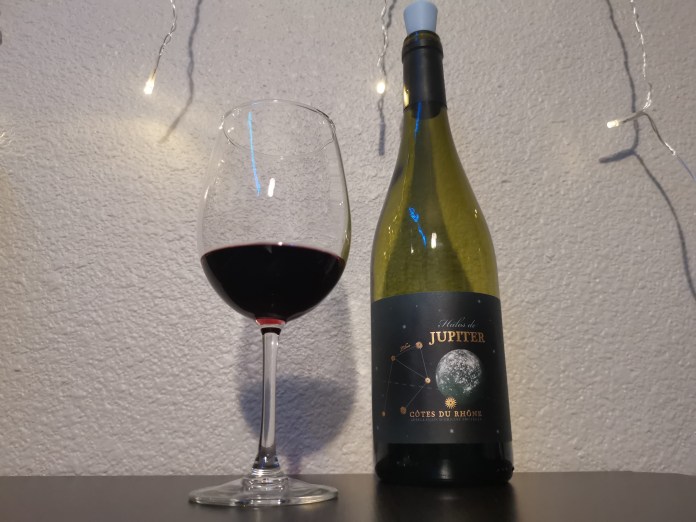Disclaimer: Don’t drink if you’re under 21, don’t buy alcohol for minors and always drink responsibly.
Whenever I choose a wine for the column, I try to find something locally produced (“locally” in this instance meaning within the state of California) but the last time I did a tasting at Total Wine & More, there was a focus on wines from Europe. One that caught my eye, not only because of the beautiful label, was this Cotes Du Rhone. Its full name is Halos De Jupiter Cotes Du Rhone.
Cotes Du Rhone is a red wine from France, specifically from the Rhone Valley. The valley is generally divided into two sub-regions that both have their distinct vinicultural traditions. These two subregions are the Northern Rhone and the Southern Rhone. Fun fact: vinicultural means the process or business of growing grapes and making wine.
The northern regions generally produce red wines from the syrah grape, which can sometimes be blended with up to 20% of white wine grapes, and other white wine grapes like marsanne, roussanne and viognier. In the southern regions, they produce a wide variety of wines including red, white and rosé, often utilizing a blend of several different grapes, without it becoming classified as a red blend.
A while back I mentioned Italian ratings such as DOC and DOCG. Of course, France and Cotes Du Rhone have their own rating. This is called AOC and stands for Appellation d’Origine Controlée. Receiving an AOC is somewhat similar to the one in Italy, and means that the wine was produced in a specific region, and has a certain level of both quality and style. Additionally, each appellation or city has its own unique outline in terms of grape variety, growth conditions and blend types permitted in order to receive their AOC status.
A Cotes Du Rhone wine is usually dominated by the grenache grape, and this week’s wine consists of 75% grenache, 15% mourvedre and the rest syrah, which can also be known as shiraz, however they are not identical, and are described to have to slightly different styles.
The French climate in the northern Rhone results in flavors such as dark berries, pepper, herbs, salt licorice and flowers, and are usually high in acidity. The shiraz grape on the other hand thrives best in warmer climates, and as a result gives flavors that are reminiscent of chocolate, blackberries, sweet licorice and prunes, which, as a result appears less acidic and has a smoother feel in the mouth.
Both types of grapes result in a wine that has a full body, with an intense flavor profile.
Jupiter is based on syrah and definitely has an acidic aftertaste, however, I don’t mind it at all. I don’t find it overpowering, but I am also used to a more acidic and flavorful wine to drink and enjoy, that others would traditionally have to pair with food.
The aroma is easy to catch, with notes of pepper, spices and cherries. The flavor is dominated by spices, with a hint of herbs and cherries, but a hint of blackberries that give a slight sweetness.
If you know you don’t mind a wine that has a more acidic taste, I think this is a great choice to enjoy both by itself and with food. Good food pairings would be rustic or traditional meat stews, or a flavorful venison, lamb or entrecote of beef. You could also pair it with sides that have some flavor to them. Semi-hard cheese like comet cheese or gruyere would also pair well with a syrah-based wine.
However, for those dabbling into the wine world, it might not be the best choice to go for a syrah-dominated wine. Instead, I would recommend looking for wine with the shiraz grape on the label or in the description. Shiraz can be found in wines from Australia, South Africa, California or other warm climate areas outside of Europe.
With this newfound knowledge, go out and explore French wine because it is truly excellent, and offers a wide variety of flavors that are great alone, but also beautiful with the right dish.
Cheers!

